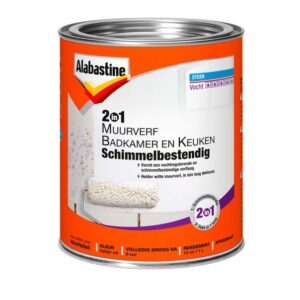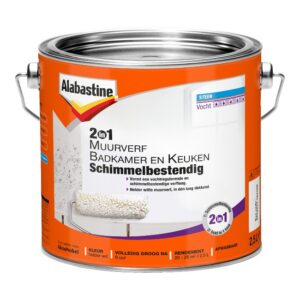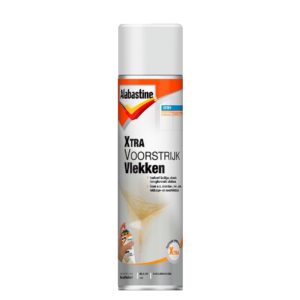+31 (0)6 8436 6625
info@molddoctor.nl
“White Mold Resistant Wall Paint for Walls, Ceilings 1000 ML” has been added to your cart. View cart
White Mold Resistant Wall Paint for Walls, Ceilings 1000 ML
€ 31,95 (incl. tax)White Mold Resistant Wall Paint for Walls, Ceilings 2500 ML
€ 61,95 (incl. tax)White Stain Primer Spray 250 ML for Damp and Yellow Stains
€ 19,95 (incl. tax)The Importance of Anti-Mold Paint
After successfully eliminating mold, the affected surface remains vulnerable to future infestations, especially if moisture and poor ventilation are ongoing issues. Anti-mold paint creates a protective barrier that prevents mold spores from taking hold again. Unlike regular paint, which can trap moisture and provide an ideal breeding ground for mold, anti-mold paint contains special fungicidal agents that actively resist mold growth. This makes it a vital final step in any mold remediation process.How Anti-Mold Paint Works
Anti-mold paint is specifically designed to provide long-term protection against mold and mildew. Here’s how it works:- Moisture Resistance: Many anti-mold paints are formulated to repel moisture, preventing the damp conditions that mold thrives in.
- Fungicidal Properties: These paints contain antimicrobial agents that kill and inhibit the growth of mold spores.
- Breathability: Unlike traditional paints, anti-mold paints allow walls to breathe, reducing condensation buildup that can lead to mold growth.
- Durability: They provide a long-lasting protective layer, making them ideal for high-humidity areas such as bathrooms, kitchens, basements, and utility rooms.

Need Advice?
24/7
Contact Now
This website uses cookies to improve your experience.
By using this website you agree to our Privacy Policy.
By using this website you agree to our Privacy Policy.
Ok, I am ready



